#the mark of zorro 1920
Explore tagged Tumblr posts
Text
Which version of this do you prefer?







#theres again also tons of zorro adaptations actually#so this one may yet again get multiple polls#polls#tumblr polls#adaptation polls#zorro#zorro 1957#walt disney's zorro#zorro disney#zorro 2024#zorro 2005#zorro stories#zorro novel#the mark of zorro#the mark of zorro 1920#the mark of zorro 1940#zorro 1920#zorro 1940#the mask of zorro#isabel allende#johnston mcculley#pulp stories#books#stories#tv shows#films
13 notes
·
View notes
Photo


The Mark of Zorro (1920)
149 notes
·
View notes
Text
the original zorro was the most autistic man ever. No wonder Bruce Wayne projected onto him so hard
15 notes
·
View notes
Text
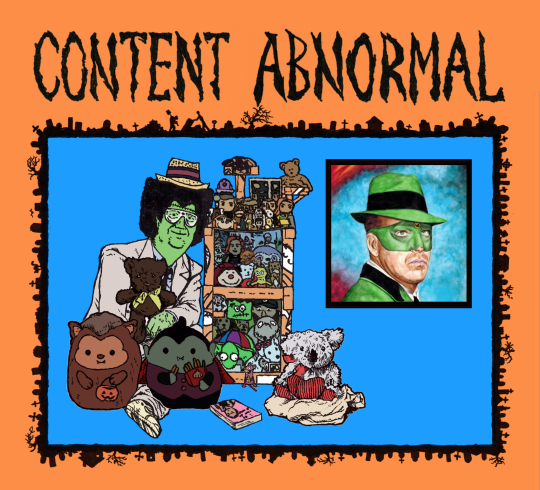
This week on Content Abnormal we present Al Hodge as a verdant vigilante in The Green Hornet adventure "The Devil's Playground"!
#al hodge#the green hornet#britt reid#the daily sentinel#otr#classic#radio#episode#the devil's playground#aka#carnival#horror host#kato#bruce lee#douglas fairbanks#douglas fairbanks sr.#the mark of zorro#1920#tubi#tubitv
4 notes
·
View notes
Text
Friendly reminder that there are A LOT of old movies and TV episodes just sitting there on YouTube, completely free. For books, check out Project Gutenberg. The Internet Archive has pretty much everything, books, movies, comics, radio shows, even old fanworks.
And that is WITHOUT starting to talk about stuff like libraries and the miles long to-watch and to-read lists and piles of books bought but not read that we all absolutely have. We’ll be just fine.
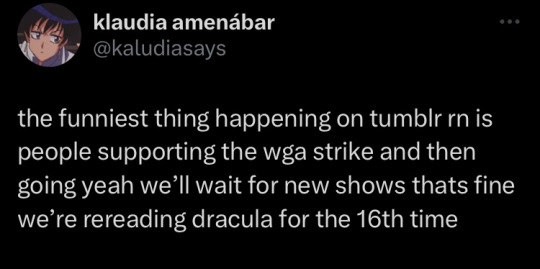
#So nice to see that I am not the only one doing this any more#no new Marvel movies you say??#Well joke's on you we have OLD superhero movies!!#that are frankly better than the ones Disney is churning out at the moment anyway#my point is everyone go and watch The Mark of Zorro (1920)#it's on YouTube#then read the book#it's on Project Gutenberg#what was I talking about again?#WGA Strike#tumblr culture
119K notes
·
View notes
Text
NFR Reviews #9: The Mark of Zorro
Released 1920 / Inducted 2015
Watch film here

Douglas Fairbanks was an established star before adopting a pseudonym to co-write the screenplay adapting Johnston McCulley’s pulp novel The Curse of Capistrano. The period piece adventure film was a change in pace–his prior work fell into the romance or comedy genres and he worried audiences were losing interest. The Mark of Zorro stars Fairbanks as Zorro, a masked vigilante who swordfights racists and corrupt politicians to attain justice. His actual identity, revealed to the audience well before the other characters know, is Don Diego Vega. For maximum dramatic irony, he’s the opposite of Zorro. The book character has a litany of bad traits: he’s lazy and aimless, he doesn’t stand up for those around him, he makes it clear to a prospective love interest he’s only pursuing her out of obligation to his father. The movie adds a running joke where he tries mediocre shadow puppetry and basic magic tricks, making him seem even less dignified and unpleasantly childish when combined with the other negative qualities.
Zorro doesn’t have superpowers in the typical sense, relying on sword fighting and trickery to win no matter how outnumbered he is. He’s almost a mythic figure, albeit less serious and more slapstick-heavy than his book counterpart. To him, his opponents aren’t even worth taking seriously. He’s an early example of the superhero template, especially in his dual identity. The concept of a masked avenger posing as a playboy inspired Bob Kane in the creation of Batman and alter ego Bruce Wayne, as did Fairbanks’ catapulting-off-the-walls stunts. I don’t think either McCulley or Fairbanks intended this, but I wonder if some tiny part of Don Diego’s lifelessness and fatigue is a genuine result of spending all night getting in fights and horseback chase sequences. Zorro looks like he takes so much energy to maintain that there’s nothing left for his civilian persona. Andrew Williams defines the fop, of which said civilian persona is an example, as an old stock character defined by “demasculinized representation and obtuse misunderstanding of the normative codes of social behavior.” Some of this trope comes from making fun of rich people–they’re the ones who can afford to dress in high fashion, avoid tough physical labor, and use their wealth to smooth over ineptitude in social situations. Some of the trope just boils down to “men who deviate too much from gender roles are weak.”
During the late 19th and early 20th centuries, many industrialized and urban jobs required less outdoor physical labor than the cowboy or frontiersman archetypes of generations past. This fueled a cultural anxiety over whether men were becoming too weak, which was one factor in why pulp adventure heroes gained popularity (Though with trends, there’s always more than one factor, some of which are much simpler stuff like “Swordfights are cool!”). Zorro fits some of this trend–his “feminine” qualities are only excused by the narrative because it’s a deliberate misdirection. His stories are set in a romanticized 19th-century Spanish California defined by “its warmth, its romance, its peaceful beauties,” providing escapism from modern industrialized society. However, the focus on justice for the oppressed and the villains being the Spanish colonial establishment sets it apart from the frontier "manifest destiny" narratives of that are more oriented around conquering and subjugation. Fairbanks took inspiration from Mexican outlaws resisting oppression during the US takeover of California. McCulley’s inspirations when writing the book aren’t known, but Zorro has similarities with outlaws like Tiburcio Vásquez and Joaquin Murrieta, who fought against violence committed against Mexicans in the years following the California Gold Rush. (Elements of these legends are difficult to verify. In Murrieta’s case it’s unclear if he even existed, but the story of his brother and wife being murdered by Americans was reflected in the real killings of hundreds of Mexicans in the 19th and early 20th centuries.) Don Diego’s wealthy upbringing in a prominent family puts him closer in background to Vásquez than the Murrieta legend.
Vega’s extreme wealth and status, often referred to as “good blood,” might’ve been another instance of irony, as he runs in the same circles as the men he fights against. The story operates under a noblesse-oblige view of justice: essentially, that wealth comes with responsibility to uplift the well-being of the less fortunate. The 1835 novel The Lily of the Valley portrays the term as from a bygone medieval age, while author Alexis de Tocqueville expressed roughly the same sentiment while feeling the Industrial Revolution-era “new rich” were abusing their privilege over workers. While superheroes’ powers are sci-fi or fantastical rather than monetary, the sentiment is echoed in the genre: “with great power comes great responsibility” was popularized by Spider-Man comics. The film contrasts Zorro against villainous politicians and military types who abuse their power to get away with beating natives, falsely accusing priests of crimes, and acting entitled to women’s bodies and affections. Despite all that, the film doesn’t expect justice to always look noble, polite, and respectable. Zorro appears as a bandit who gets a death threat for “frightening children and insulting women” while the people he’s actually insulting do much worse. The film’s noblesse-oblige perspective has some drawbacks, though. It lets some aspects of the established social order go unquestioned (for example, why every indigenous person is a servant) as long as the people at the top aren’t being total assholes about it.
The Mark of Zorro is a throwback to a place and time that would’ve seemed exotic to many viewers, and there’s a bit of paternalism and “back when men were men” attitudes that come out of this. But the premise of a man who fights injustice against the oppressed and looks cool doing it still holds up. Even though the character isn’t quite as high-profile today, there’s a reason the story was influential to the action and superhero genres.
Sources
https://www.jstor.org/stable/10.2979/chiricu.1.1.11?seq=1
https://silentfilm.org/the-mark-of-zorro
https://millstonenews.com/noblesse-oblige/
https://www.learningtogive.org/resources/noblesse-oblige
https://thestacks.libaac.de/server/api/core/bitstreams/da53aefc-2e41-44f1-a68c-8dc4890f8c2f/content
https://scholarship.rollins.edu/cgi/viewcontent.cgi?article=1002&context=as_facpub
https://e-space.mmu.ac.uk/617579/8/Superhero%20and%20%20Identities%20an%20introduction%20final%20dec%2023%202013%20(7).pdf
https://www.hollywoodreporter.com/news/general-news/ghostbusters-top-gun-enter-national-849092/
https://en.wikipedia.org/wiki/With_great_power_comes_great_responsibility
1 note
·
View note
Note
Just made the horrible realization that Bruce Wayne is probably younger than me now given the fuck up state of Comic book timelines
but also that there is a very high chance Bruce's parents were murdered after watching the Antonio Bandera's Mask of the Zorro
I'm likely about Bruce's age now (I mean he should be 40-50 years old to have been a dad, but we can't have Bruce Wayne be 47 years old!) and yeah the 1998 Mask of Zorro would be just about the right time frame, they should jump on that while they can, because like... where would you even go to see the Mark of Zorro? (fun fact its unclear in canon which Mark of Zorro it is, the 1920 silent film original, or the 1940 remake) and what child wants to see a black and white old movie?
any ways here's a head fuck for you, when Batman came out in 1939, my grandpa was 14, just the readership age for comics at the time, and this year would be his 100th birthday so thats ageless comic characters for you, also this year marks 10 years till Batman enters the public domain, tick Tok, can't come fast enough!
22 notes
·
View notes
Text
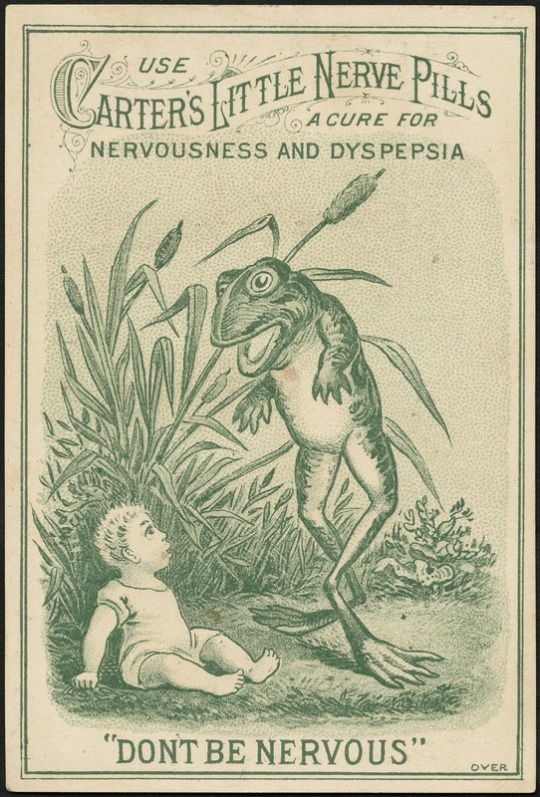
Does this frog make you feel calm?! Or perhaps like you have been mildly poisoned with henbane?
Please enjoy these extra notes regarding things that appear in my Shameless Big Bang fic Last Night at the Verona Grand Hotel, in order of appearance. Also now listed in the work endnotes on AO3 (but without the pictures).
This post contains lots of spoilers for the fic.
The train that Mickey takes from Chicago to Los Angeles is an Amtrak route called the Southwest Chief.

Mickey reads Treasure Island as a reference to Loftec’s fic Take this waltz.
The green popsicle is Melona.
I went for fictionalized geography around where exactly the hotel is, but the descriptions of the view on the drive up are based on pictures of Los Liones Trail.

The Verona Grand is, of course, inspired by the early years of the Chateau Marmont, but also crossed with a creepy old hotel I’ve stayed at in Colorado. The name is a reference to the setting of Romeo and Juliet plus the Neptune Grand from Veronica Mars (for that sunshine noir energy).
The Mark of Zorro (1920): Full disclaimer, unlike Mickey, I didn’t watch the whole thing (I didn’t have the good incentive of looking for my crush), but the moments I referenced are here and here.
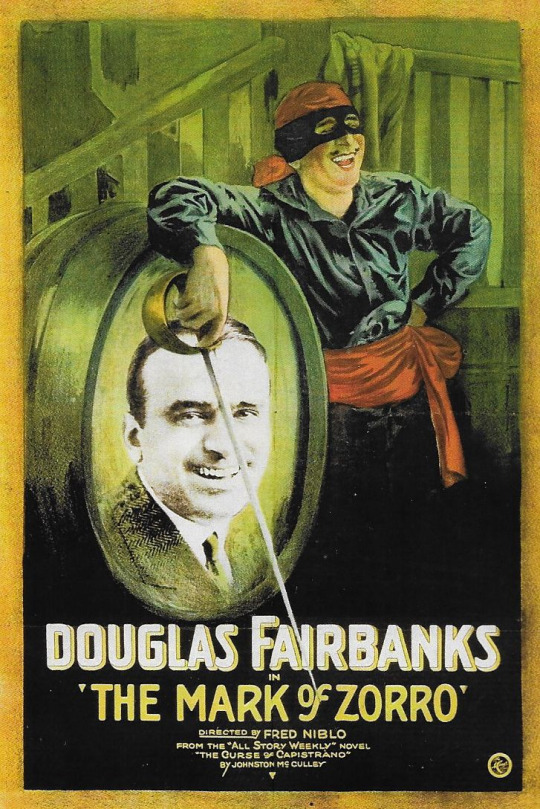
(About ten years ago, I went to an outdoor movie screening that had been advertised as The Mask of Zorro but turned out to be The Mark of Zorro; after about 30 minutes, we all gave up and went home. Sorry, Douglas Fairbanks! We wanted Antonio.)
Hunter’s name is a reference to 1950s actor Tab Hunter, who came out as gay in 2005. (One of his long-term relationships was with Anthony Perkins of Psycho fame, after they met at the Chateau Marmont.)
KY Jelly has been around since the early 1900s (!). Here’s some of the vintage packaging. We’ll just assume Mickey was distracted and didn’t look too closely at the tube (or thought it was pretentiously packaged hipster lube; thanks for that idea, Deanna!).
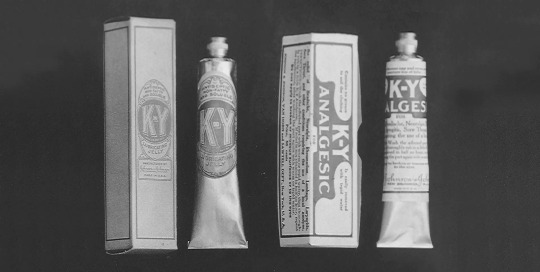
Mickey calls Davie “Nurse Ratched” as a reference to One Flew Over the Cuckoo’s Nest; the actress who played her in the original movie, Louise Fletcher, played Frank’s mother in season 2 of Shameless.
Nerve pills: These are fictionalized (I don’t know how well they worked or what they tasted like; probably not nice!) but they’re based on Carter’s Little Nervine Pills, the active ingredient of which was extract of hyoscyamus, which (if my Googling is correct) is henbane. Henbane is quite toxic and can cause hallucinations. It was commonly associated with witchcraft, since ointment made with it could cause people to see things and feel like they were flying. Never change, early 20th century medicine.
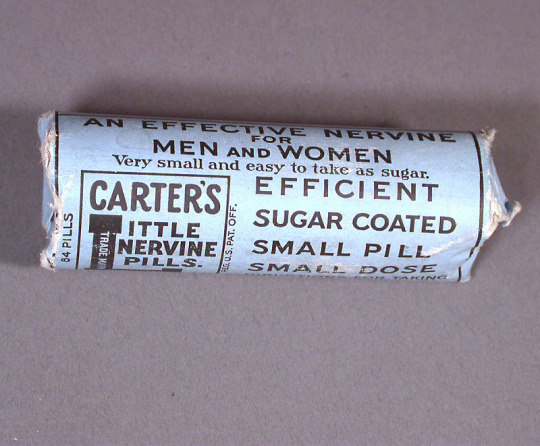
Another one of the compounds in henbane is scopolamine, which can be used to treat motion sickness. This worked well for my purposes because I had decided that the sickness Ian and Mickey experience when they stay in the wrong time is a cousin to motion sickness (if traveling through space too fast can make you feel sick, why not traveling through time?).
The concept of quantum entanglement is the other one in my mind when I think about what “connects” them each to their own time, but don’t ask me any follow-up questions on that, because honestly I’m not great at physics and I don’t totally understand it. Storytelling-wise, I just like the idea of things being connected to each other on a submolecular level. I refer to this in Two of Your Earth Minutes, as well, for the same reason.
Mickey also makes a reference to the idea of the observer effect. (Lotta quantum mechanics in this dang ghost story!!)
The new movie Ian is going to audition for is A Woman of Paris, directed by Charlie Chaplin.

I think he would have gotten it, don't you?
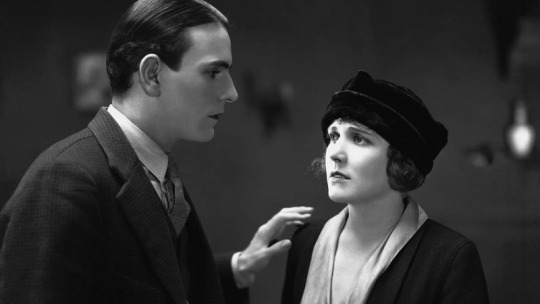
34 notes
·
View notes
Text


Fred Niblo’s THE MARK OF ZORRO, starring Douglas Fairbanks, “The great hurricane of joy and excitement,” premiered in New York City #OnThisDay in 1920.
35 notes
·
View notes
Text

In other news, "King of Hollywood" Douglas Fairbanks sounds like a bit of a dick.
(from the pressbook for 1920's The Mark of Zorro)
#silent film#public relations#zorro#hollywood#douglas fairbanks#working people nearly killed by the whimsical excesses of a reckless douchebag#may not be the charming anecdote the p.r. flack thought it was
19 notes
·
View notes
Text
Action January II: Captain Blood (1935)

Part One: By the Sword
Fun fact about me: I am a non-classically trained fencer.
By which I mean I went through formal training as a child (starting at 6 or 7), then continued it sporadically through my youth and college. Kept up with it a little after college, but I'm no longer a fencer. Still, it was a pretty prominent part of my life, and one of the more bougie facts about me (of which there are admittedly many; I am, for example, struggling to not type bourgeoisie). I look back on it fondly, but it's not for modern-day me.
Still, I've always had a soft spot for swashbucklers, especially in film. Sure, traditional épée fencing doesn't resemble your typical swashbuckling film fight, even a little bit. Usually, épée with the fencing gear is put in a movie or TV show to demonstrate that the character or establishment practicing it is high-class or rich. Instead, I suppose cinematic swashbuckling is more similar to sabre fencing, which has a larger target zone than épée fencing, and usually involves grander movements...but even then, I've never seen any sabre fencer swing from ropes and rafters like, well...
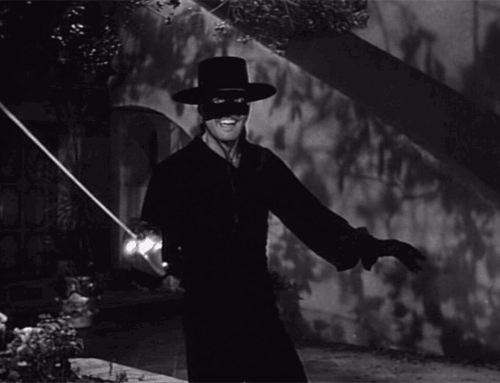
Zorro is a character that I've talked about before on this blog. I've also covered the swashbuckler briefly in that post, but let's get a little more comprehensive this time, shall we? Zorro is maybe the prototypical swashbuckler character, starting with Douglas Fairbanks' epic film The Mark of Zorro in 1920! Yeah, old as hell. He was daring, dashing, and debonair; dressed in black and fighting for justice to get the girl and save the day, armed with only a sword and his wit! The prototypical action hero! Throw in some great choreography and epic music, and voila! A swashbuckler! To put one together properly, we need:
A dashing hero, with devil-may-care attitude that fights for the moral right. If we're talking in DnD terms, you can call this person chaotic good alignment, usually. Swinging from the rafters, a sword in hand and often a smile on their face. And, of course, a romantic aim and goal.
Swordfighting. Kind of critical to the genre. Swashbucklers are films that use swordfights as the driver for the plot. While not every action sequence may involve a sword fight, the main hero is always either armed with their sword or looking for it. And then it's time for the climax, you better believe we've got a big-ass swordfight on our hands. The villain of the piece, at least one of them, should also have a sword in hand.
A sweeping score is a very typical piece of these films. Whether in the past or present, swashbuckling can't be done without an iconic leitmotif for the hero, and battle music times to the clashes of steel. Usually throw some brass or strings in there, and you have a swashbuckling score.
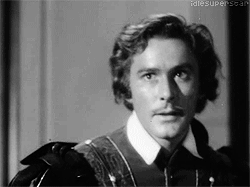
Now, of course, there are a lot of swashbucklers out there based on those definitions, and...yeah, there are a lot of swashbuckler films! While The Mark of Zorro is typically called the first swashbuckler, it's not the first film to involve narrative swordplay by any means. The Count of Monte Cristo (1908) is probably the first of those, but there are others like The Prisoner of Zenda or Kidnapped. You may also notice that some of the classic swashbucklers are based on classic literature, like those above, and like Cyrano de Bergerac, The Scarlet Pimpernel, The Man in the Iron Mask, and the most prominent of these...

It's funny, for a character best known for his archery skills, Robin Hood gets into a lot of swordfights. Some of the most iconic filmed swordfights come from the emerald archer from Sherwood, and for good reason! There have been countless adaptations of the original stories, which are crazy cinematic, and they all take place in medieval England, during a time period where swords were predominant weaponry. Combine that with the fact that Robin Hood is, in many retellings, a nobleman who would've been trained in fencing, and you have a natural swashbuckler setup!
And honestly, Robin Hood is sort of the perfect swashbuckler. A morally good hero fighting against the evil establishment, for his friends, contrymen, and the woman he loves. Epic music, daring setpieces, classic fights, a lot of swingin' rafters...yeah, it's perfect. And again, one day, I'll talk about The Adventures of Robin Hood from 1938; one of my favorite action films, and my favorite adaptation of Robin Hood for sure.
But there's another type of swashbuckler that's just as iconic as those listed above, also involving a setting conducive to sword-based action, but often with heroes that are...a little more morally grey.
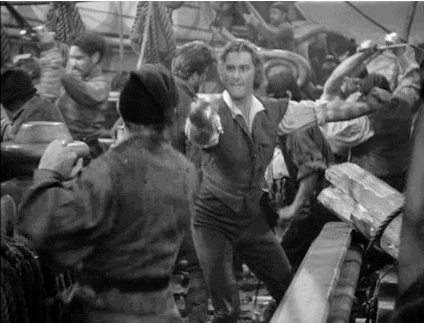
Pirate films are essentially a subgenre of the swashbuckler (yes, a subgenre of a subgenre of a subgenre), focusing on high-seas action rather than fighting in a hall or castle. The pirate film is a curious beast, appearing in film history in sporadic bursts, with no real period to call its own. They were popular from the '30s through the mid-'60s, had a tiny boom in the '80s, got badly nuked in the '90s, and then had another tiny boom in the '00s with the Pirates of the Caribbean franchise. They're always around, but never the first genre you'd think of when you think of action films.
Still, pirate films have an iconic feel to them all their own. The wind in your hair, the daring sword fights against a surly knave or an overzealous government stooge, depending on the nature of your morally dubious hero. Hell, maybe the hero has resorted to piracy after being wronged or lost at sea, and we're rooting for him and his lost honor. Either way, he's got an open shirt and a sword in his hand, and his crew are there to back him up (or betray him; again, depends on the narrative). You know a pirate film when you see one. And that's where I'm headed today: to the open seas with Captain Blood, starring an iconic action star of the 1930s and '40s. In fact, he's so iconic, almost every one of the above GIFs includes him.
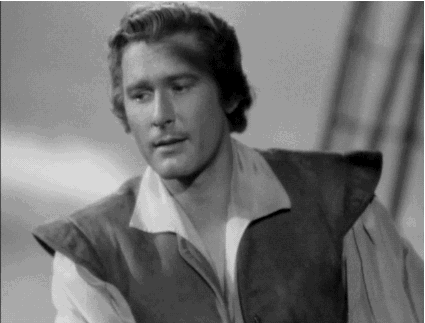
Errol Flynn is undoubtedly a major film figure of his day. He's also got a fascinating and...sometimes troubling personal history, putting him up there with some of the great Australian film actors in cinema. But as much as I'd like to talk about Errol Flynn (and I probably will later), I'd like to finally jump into the film that made him famous: Captain Blood, a 1935 film directed by Michael Curtiz, another interesting figure with some...interesting history with Flynn. Again, more later.
Flynn was an unknown before this role, and immediately became an audience and studio favorite, essentially succeeding Douglas Fairbanks as a films and action star. Only 26 at time this film came out, Captain Blood was the beginning of an often turbulent career for Flynn, who would die at only 50 years old. Again, more on him later. And so, without further ado...SPOILERS AHEAD!!!
Recap

It's 1685 in England, and there's a rebellion happening! Known as the Monmouth Rebellion, it involved the deposition of James II, after succeeding his brother as king of England, which was contested by Parliament and Protestants, as James II was a Catholic king. Anyway, during the rebellion, Doctor Peter Blood (Errol Flynn) is summoned to aid a friend injured in a skirmish. A retired adventurer and swashbuckler in his own right, Blood is determined not to re-enter the...fight...
Is this Commando? Like, where a retired hero is forced to come back to fight for his country, and won't come back until a personal tragedy or offense is done to him? You know, like Commando? Just calling it now, before it happens.
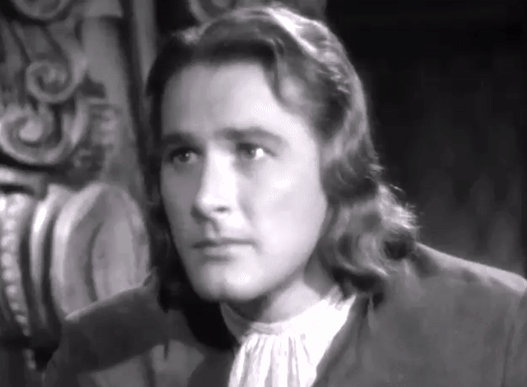
As Blood is helping his friend, he's taken away and sentenced by Judge George Jeffreys (Leonard Mudie), who accuses him of being a liar and traitor to the crown, despite his complete innocence. Imprisoned and set amongst a group of similar prisoners for months, he attempts to defend himself on the stand, only to condemn himself even further beneath a biased kangaroo court. And for the record, Flynn immediately proves why he's so beloved at this time. He's an excellent actor in this scene, and I immediately sympathize with Peter Blood.
Meanwhile, King James II (Vernon Steele) is convinced by his advisor to send the convicts to the West Indies as slaves, as actual slaves are too expensive, and these guys are free of cost. So, yeah, British monarchy not looking too great. In any case, we set to sea for the first time, in the belly of an unrealistically humane slave ship. In Blood's words, the King was "granted their lives in exchange of an uncertain death". And with that, Blood and the convicts are sent o Port Royal, in Jamaica.

The convicts are set for sale (hate it), and most of them are sold to Colonel Bishop (Lionel Atwill) and his niece, Arabella (Olivia de Havilland). When she observes Blood's rebellious nature at being inspected like cattle, she decides to keep him from working in the mines on her own spoiled whims. Blood's not a fan, and the two immediately clash. Which, obviously, means they're gonna fall in love by the end. Come on, we know how this goes.
Blood's sent to work on the plantation with Bishop's other slaves, on a grinding mill that loves like it's ripped out of Conan the Barbarian. We see the indignity of slavery through...white slaves. Yeah, trying not to think about it, since this is a thing that happened, but it's tough. Anyway, our traitors are taught a lesson about treason, as an escapee is branded on his fucking face, and the prisoners all say how much they hate the fucking King. Great job, James, really fanning the flames of patriotism there.
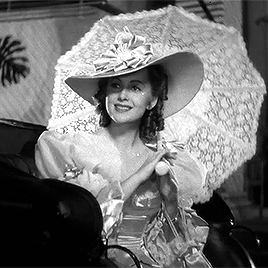
Meanwhile, the uncaring and selfish governor, Steed (George Hassell) is complaining of gout, and is in need of a physician. Knowing of Blood's former profession, Arabella recommends him as Steed's physician, and is mostly elevated from the role of slavery, which seems...insanely easy. Irritatingly easy, even. But whatever; at least he hasn't forgotten his friends, his actual station, or the fact that Arabella bought him for 10 goddamn shillings! He's still understandably bitter about that.
However, he's in very good favor with the governor for relieving his gout, unlike the previous doctors Bronson (Hobart Cavanaugh) and Whacker (Donald Meek), who attempt to plot to get rid of the much more competent Blood. He puts them in their place, but begins a plot of his own. With the other slaves arrested for treason, he plans an escape attempt from Port Royal, with the help of friend (and the guy who got him in this mess to begin with, Jeremy Pitt (Ross Alexander). However, in the process, Colonel Bishop suspects some kind of plan, which is only circumvented with the help of Arabella. In the process, however, Pitt is captured and flogged for questioning.
While his friend is getting horribly whipped by the Colonel on the stockades, Blood and Arabella flirt (as expected), although a kiss from Blood is received poorly due to his status, leaving the encounter on a sour note. Peter goes back to care for the Governor before their escape that night, then finds Jeremy at the stockades and cares for him as well. He's caught by the Colonel showing mercy, and is about to share Jeremy's fate when a ship attacks the port.
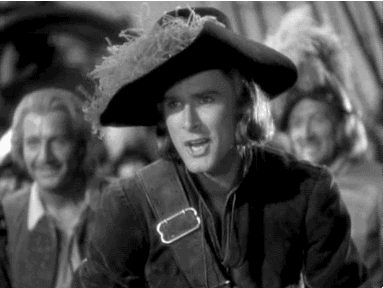
This ship belongs to the Spanish, and the sailors aboard lay waste to the port. It's at this point that the slaves see an opportunity, and make their way to the ships. They take over the Spaniard's ship, and wait until the morning to take out the returning Spaniard captain and soldiers. With navigator Pitt and new gunner Henry Hagthorpe (Guy Kibbee), the new crew sets sale and escapes, under the purview of the new Captain Blood.
Colonel Bishop, like...like a fucking idiot, sails out on a rowboat to thank the men, not realizing it's his own slaves. And then, when he finds out, he still intends to keep them as slaves. THEY HAVE A SHIP, DUDE! You're fucked. Instead of killing him, which they consider, they toss him overboard, and Blood's crew sets sail for the Caribbean Sea, leaving Arabella behind. They abandon their citizenship, and officially become pirates.

The crew of Blood becomes famed and infamous across the seas, to the irritation of King James II himself. With Governor Steed having lost both money from the Spaniard assault, and being unable to reign in Blood in the first place, his appointment as Governor is given to Colonel Bishop, who swears to take care of Blood once and for all. Arabella is conflicted about this, but she's shipped off to England along with Governor Steed.
On Tortuga, Blood signs a deal with another captain, the French Levasseur (Basil Rathbone), and the two become partner pirates. Later on, Arabella finishes her extended holiday in England, traveling alongside Lord Willoughby (Henry Stephenson), who has been tasked to take out Captain Blood. On their journey, they see Levasseur's ship, which attacks them and takes the passengers hostage on a nearby island. They are soon joined by a surprised Peter Blood and his crew, who pretends not to know her.
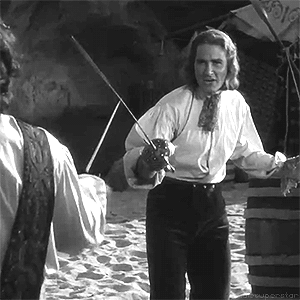
Blood and Levasseur engage in an argument, as one of the articles of their contract was that no female prisoners would be taken. As a compromise, Blood pays for her ransom, both to save her and as payback for his purchase of her many years ago. This still enrages Levasseur, who wanted Arabella for himself, and he forgoes his honor to challenge Blood to a fencing duel. Fun fact, by the way: Basil Rathbone was an actual fencer, classically trained, and far better than anyone he ever fenced with on-screen, Flynn included. But, since he always played the role of a villain and cad, he was always forced to lose. And this fight is no exception.
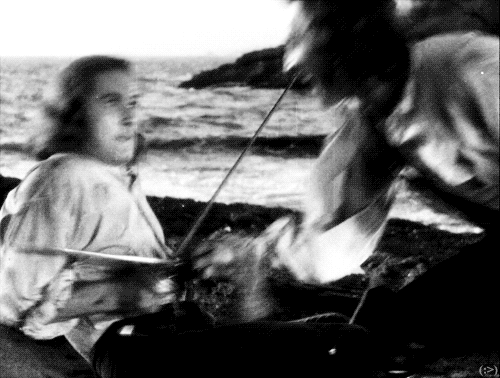
Levasseur is killed by Blood...which is crazy, since he's Basil fucking Rathbone, and he was in this movie for maybe 5 minutes altogether as essentially a cameo, but...c'est la vie, et la mort. Arabella and Willoughby are brought on board, only for Arabella to angrily reject him. And yes, she's absolutely a goddamn hypocrite, but she's not fully unjustified. She puts Blood down as a beast like any other pirate (unfairly, of course), and Blood angrily rebukes her in turn. Even then, he plans to bring the two hostages back to Port Royal, where they are certain to die.
Willoughby and Arabella speak, where he convinces her that Blood's genuinely not a dick, and tells her that they're headed to Port Royal. At the same time, Blood's crew refuses to sail to Port Royal, officially acting in mutiny against Blood. And Blood...gracefully surrenders his command of the ship, admitting his affections for Arabella to be driving him against logic. And that ironically turns the crew back to Blood's command. I can't tell if that was a sign of their actual bond, or some straight gatekeeping-girlbossing-gaslighting from Blood, but...yeah, they're still going to Jamaica.

As they approach Port Royal, though, they find it being attacked by two French ships. Willoughby, finally being able to speak with Blood, informs him that France and England are at war. To their surprise, though, Governor Bishop isn't present, nor is the English fleet, since they're out chasing pirates. And so, the only ship to defend Port Royal against the French, is...well, Blood's.
It's then that Willoughby finally reveals his purpose for seeking Blood and his crew: the King has pardoned him. Obviously, they're not a fan of King James II given what he'd done to them, and refuse the offer. But then, Willoughby reveals the other political change: James II is out as King. With that knowledge, Blood and his men decide to fight for the English Navy, and for the new King William III.
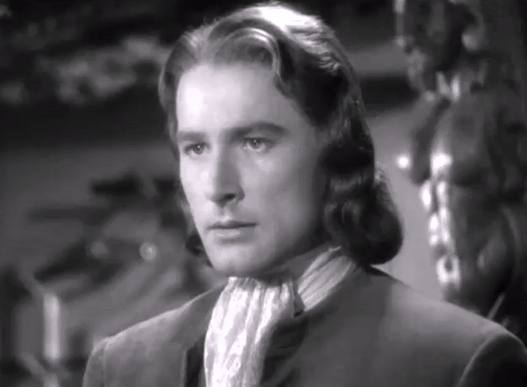
Arabella is shuttled ashore, while the ship sails under a French flag to disguise themselves. They easily ambush the French ships attacking the Port, wrecking one and causing it to fucking explode. Honestly, it's pretty sick. The other ship mounts a harsher assault, and Blood's crew is forced to abandon ship. Instead, they simply take the French ship for themselves. And as the Captain swings over, you realize something: this is the prototypical pirate movie.
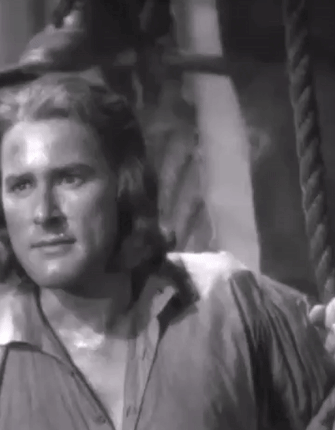
Yeah, OK, earlier films like The Black Pirate, as well as later ones like The Sea Hawk and Treasure Island, would be a major framework for pirate films in the future. But good goddamn, if this doesn't feel like a pirate movie, I don't know what does. The score is sweeping, the action is epic, and it's honestly just fun. And the most ironic thing is, this is happening at the point in the film when they aren't technically pirates anymore! Hilarious.
Anyway, Blood's crew wins the day for England, only for the Governor to finally return from his futile journey. Arabella, seeing Blood return and knowing her uncle's hatred of him, tries to warn him away while admitting her love to him. But to the surprise of her and her uncle, Bishop is officially deposed as Governor for abandoning his post in times of war to pursue his vendetta, even though he knew Willoughby was coming. He's at the mercy of the new Governor: Doctor Peter Blood. Honestly, it's funny as fuck. Blood bids him "Good morning, Uncle.", and the film comes to a close.
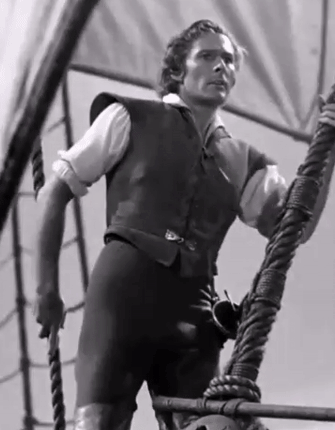
That's it for Captain Blood! Gonna do an old-fashioned review set-up and have a separate post for the Review! And that's because, while the review won't be terribly long...I would really like to talk about the man, the myth, the alcoholic legend himself, Errol Flynn.
See you in the Review!
#user365#365 days 365 movies#365 movies 365 days#365days365movies#365 movie challenge#365 movies a year#action january#action#action movie#swashbuckling#pirate movie#pirates#captain blood#michael curtiz#errol flynn#olivia de havilland#basil rathbone#action genre
12 notes
·
View notes
Text








The Mark of Zorro (1920)
17 notes
·
View notes
Text
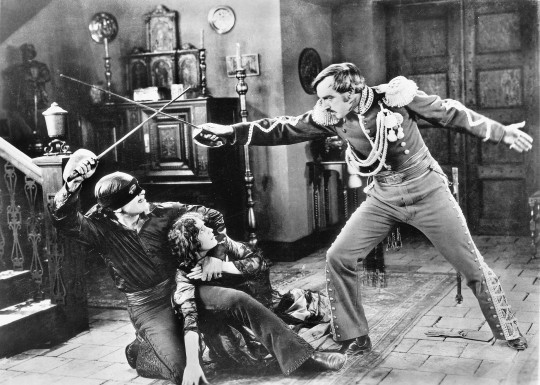
Douglas Fairbanks, Marguerite De La Motte, and Robert McKim in The Mark of Zorro (Fred Niblo, 1920)
Cast: Douglas Fairbanks, Noah Beery, Charles Hill Mailes, Claire McDowell, Marguerite De La Motte, Robert McKim, George Periolat, Walt Whitman, Sidney De Gray, Tote De Crow. Screenplay: Douglas Fairbanks, Eugene Miller, based on a magazine story by Johnston McCulley. Cinematography: William C. McGann, Harris Thorpe. Art direction: Edward M. Langley.
Film firsts are usually worth checking out, and The Mark of Zorro is a double first: It's the first appearance of the title character on screen, and it's the first of the genre of films for which Douglas Fairbanks remains best-known, the swashbuckler. Since Fairbanks and co-scenarist Eugene Miller adapted Johnston McCulley's 1919 magazine story, "The Curse of Capistrano," the masked hero has been played by Tyrone Power, Guy Williams (in the Disney TV series), Frank Langella, George Hamilton (in a spoof featuring Zorro's gay twin brother), Alain Delon, and (as the aging Zorro and his hand-picked successor) Anthony Hopkins and Antonio Banderas, and appeared in numerous Mexican and European films. The trope of the do-gooder who pretends to be a wimp but turns into a force for justice has its precursor in the Baroness Orczy's play and novel The Scarlet Pimpernel and lives on in countless superhero tales, most notably the Clark Kent/Superman story. As the languid fop Don Diego Vega, Fairbanks affects a weary slouch and spends his time doing tricks that involve a handkerchief. When he turns into Zorro, with mask and scarf over his head, he pastes on a little mustache oddly reminiscent of Boris Badenov, and succeeds in taking on the villains with great élan. The film itself begins slowly, with too much exposition crammed into the intertitles, but eventually Fairbanks gets his act together, and the climax of the movie is a hilarious showpiece for his acrobatic moves. He leads the Capistrano constabulary on a merry chase over walls and across rooftops, inevitably tempting them into disaster: He leaps over a pigsty, for example, whereupon the pursuers fall into it. At the end, revealing his secret identity, he wins the hand of Lolita Pulido (Marguerite De La Motte), by saving her family's estate from the clutches of the evil governor (George Periolat) and his henchmen, Capitán Juan Ramon (Robert McKim) and Sgt. Pedro Gonzales (Noah Beery), both of whom get branded with the emblematic Z (though the sergeant gets his only in the seat of his pants). Good fun, once it gets going.
24 notes
·
View notes
Note
do you think Snyder got the idea for Batman branding criminals in BVS from Lobster Johnson? Also, do you know if branding criminals was like a common thing old heroes did?
Leaving some sort of calling card or mark with defeated criminals to claim them? That was pretty ubiquitous. But branding on a body specifically seems to be a more modern invention, and possibly a case of convergent story evolution.
Zorro is the proto-proto-vigilante, since 1986 (The Dark Knight Returns #1) often cited as an in-universe inspiration for Batman, with "The Mark Of Zorro" the movie he watched before his parents died.

"Tyrone Power" places this as the 1940 movie. But in the silent 1920 movie that this was a remake of, Zorro slices his titular Z mark into Captain Ramon's forehead to mark his defeat.


The Wikipedia page for Lobster Johnson mentions pulp vigilantes The Spider and The Phantom as possible inspirations, both of whom used ink to stamp marks on criminals' foreheads. (The Singh Brotherhood, 1936). Though the Phantom later just punches people so hard that the ring he's wearing leaves the mark.

The first actual branding I'm aware of is from early neo-pulp vigilante Night Raven (Hulk Comic #1, 1979). The mysterious glove method is almost 1:1 with Lobster Johnson's method (Conqueror Worm, 2001):


I've also run across people comparing Snyder Batman to the 2006 run of Moon Knight where he carves his symbol into people's foreheads. Actually, the non-forehead location really makes Batman v Superman the odd man out here. It feels less iconic, if that makes sense, and therefore more real (and therefore more cruel).

If this was supposed to be a "deconstruction" of the "realistic consequences" of vigilantes marking criminals, it doesn't exactly work. In practice, pulp heroes usually used less intense calling cards; the ones who were that brutal killed their victims first anyways. At that point, they're essentially rogue hitmen signing their work.
#the clone saga's ''mark of kaine'' falls into the serial killery side of this too but has a more biblical root#and THAT mark was specifically to PROTECT its target#comics history#batman
5 notes
·
View notes
Text
While we’re on this topic of old films we watched and enjoyed, some random movie recs from the 1910s through to the 1970s based on the things that popped into my head fastest. Warning in advance, I like horror, noir, swashbucklers, dark comedy and dodgy fantasy films.
1910s
Fantômas serials (1913/1914) – As I said in the previous post, if you ever get a random hankering for silent-era pulpy French crime thrillers, these are an excellent start.
1920s
Metropolis (1927) – the imagery in this movie is absolutely stunning, even if the morals are extremely heavy-handed. Worth it for the Robot Maria transformation sequence alone. Also, and I feel mean for thinking this, because the poor man’s going through hell, but there are moments where Freder is truly hilarious. And also, Batman: The Animated Series owes so much, visually, to this movie. It single-handedly shape a vision of what cities and the future and architecture and transport could look like.
Nosferatu (1922) – imagery. The Germans were so fucking good at imagery in early cinema. Admittedly the movie does some very strange things to the Dracula mythos, and is probably the source of a lot of later ideas of him that have nothing to do with the novel (the sunlight thing), but it’s so cool.
1930s
M (1931) – Peter Lorre is incredible. And actually the whole set up of this movie is so creepy and tense and enthralling, and then the court scene busts it wide open. Deals with some heavy things, including child murder, vigilante justice and mental illness, but it’s so good. And you will never hear ‘Hall of the Mountain King’ the same way again.
The Thin Man (1934) and sequels – they’re half hardboiled noir and half screwball comedy, but they’re not a parody, because they predate most of the noir genre, so this is more of a funny hybrid precursor series. And they’re really funny. If you just want some pep and jazz in your life, a good time for an hour or so, totally watch these, they’re adorable.
The Prisoner of Zenda (1937) – Okay. I just like a good swashbuckler? You will see Zenda several times on this list, because I enjoy a lot of versions of this, but of all of them you need to start with this one, because Douglas Fairbanks Jnr. No one else will ever do Rupert of Hentzau like him. If you like your charming, snarky villains, if you like your Lokis, Rupert of Hentzau. Douglas Fairbanks Jnr. If you also like your villain and your hero to have powerful sexual tension and lean very close to each other while crossing blades, again. Rupert of Hentzau. Just watch. You’ll see.
Son of Frankenstein (1939) – I’m not going to lie, I watched this movie purely to see where Young Frankenstein (1974, also very much worth a look) was getting a lot of its in-jokes and gags from (Inspector Kemp in YF is riffing off Inspector Krogh in this movie). But it is worth watching wholly on its own merits. Among other things, Inspector Krogh is a genuinely cool and compelling character (as a kid, the monster ripped his arm out during its first rampage, and during this movie Krogh fully stands up to that childhood nightmare and has a cool moment with his prosthetic arm), and if you have any interest in Basil Rathbone, Boris Karloff or Bela Lugosi, this movie is fantastic. Lugosi in particular as Igor does so much in this movie. If all you picture when you think of him is Dracula, try this. (And The Black Cat (1934), which also has Karloff and Lugosi, but is significantly more intense).
1940s
The Mark of Zorro (1940) – Okay. I like swashbucklers. I like movie sword fights. This movie has the best movie sword fight ever. Basil Rathbone vs Tyrone Power. No contest. And, I mean, yes, the rest of the movie is also good. But watch it for the sword fight. Perfection.
The Wolf Man (1941) – This movie and Casablanca between them gave me a bit of a thing for Claude Rains. I don’t know, he’s just really compelling to watch. Very soft-spoken, but very there. And if you want the tragedy of the werewolf curse, this is the movie that started it all. This is not a monster movie. This is a psychological horror story of one man breaking apart under the burden of a curse. It’s so good.
Casablanca (1942) – I mean, it’s everyone’s answer. It’s stereotypical, the classic movie. But it is very, very good. Extremely quotable. I wish to punch Rick in the face several times over. And Claude Rains as Renault is so sleazy, but also so compelling.
Arsenic & Old Lace (1944) – If you ever wondered what the deal with Cary Grant was. This movie. His face. The whole movie just rides on his face. His reactions, his body language. I mean, the movie does a lot of things spectacularly. If you enjoy dark comedy, this is the pinnacle. Hiding bodies in window seats, kill count competitions between a psychotic criminal and his maiden aunts, the extremely morbid running gags of ‘yellow fever’ and Teddy charging up the stairs and the elderberry wine. But really it’s all Cary Grant and his fucking expressions. There are several points in this movie where I can’t breathe. For a man with so many suave, serious leading roles, his physical comedy was incredible.
The Big Sleep (1946) – This was the movie that introduced me to noir. Not the Maltese Falcon, not Double Indemnity, not Sunset Boulevard. This one. The Big Sleep. And you can argue that it’s not the best of the noirs, it’s a bit too caught up in itself, the plot if you pay attention has some big holes in it, and if you compare it to the book one female character in particular got rather cheated. But. As an introduction. It does land, very definitely. Bumpy Go-Cart (sorry, Humphrey Bogart) and Lauren Bacall are all that and then some. If you want to pick a noir, you can do a lot worse.
1950s
The Prisoner of Zenda (1952) – Mostly I like this as a compare/contrast to the 1937 one. It’s damn near a shot-for-shot remake, and while that could be a bad thing, it’s fascinating what differences and interpretations show up because of that. Watch the ’37 one first, and then watch this one. It’s just cool to compare them. And, you know. It’s still a really fun swashbuckler.
The Court Jester (1955) – Just the best time. The best. I have an unreasonable amount of fondness for this film, this gentle send-up of previous swashbucklers and period dramas in the vein of The Adventures of Robin Hood, and basically every movie Basil Rathbone ever made. Watch it for Danny Kaye, watch it for the tongue twisters, watch it for a baby Angela Lansbury, watch it for an absolutely hysterical duel scene, watch it for Maid Jean being the single most competent character there. Just watch it. I cannot entertain criticism on this point. It’s excellent, and I’m not sane about it.
Some Like It Hot (1959) – Jack Lemon is going to show up again later in this list, and for good reason, (as is Tony Curtis, but we don’t care as much about him), but Some Like It Hot is also, for a 1959 movie, a really gentle, funny, interesting look at gender roles? I mean, the premise is two dudes going undercover as female musicians with an all-female band to avoid mob hitman, and one of them keeps getting hit on by rich man while the other struggles to get it on with Marilyn Monroe in his male persona while trying to hide from mob assassins in a female persona, so it could be such a hot mess, but it actually … It’s quite gentle. Marilyn’s Sugar gets to talk about what men expect when they see her and, because he’s pretending to be a woman, Tony Curtis’ Joe has to listen to her, Jack Lemmon’s Jerry/Daphne gets to get genuinely swept up in the feeling of being romanced as a woman to the point that he’s semi-seriously talking about marriage, and in the end, when Jerry reveals he’s a man to Osgood, the rich old idiot who’s been trying to romance ‘Daphne’, Osgood famously just goes ‘well, nobody’s perfect’, and still appears perfectly willing to marry ‘her’. I mean, it has its issues still, but there’s such a lot of gentleness in it for a comedy movie made in 1959.
1960s
The Innocents (1961) – One of my two all-time favourite horror movies, on raw atmosphere alone. It’s so eerie. SO EERIE. It’s horrible and twisted and goes heavy places (child death, a child acting ambiguously sexually while possibly possessed, strong questions of sanity), but it’s done so gracefully and gently and eerily. If Gothic Horror is of interest to you as a genre, if you enjoyed Crimson Peak, try this. It is all beautiful sunshine and sprawling lawns and twisted desires and paranoid terrors and the single eeriest scene I’ve ever seen in anything ever. Watch the lake scene. It’s stunning.
The Raven (1963) – Pivoting back to comedy horror, this time with added fantasy. Vincent Price has been in a lot of better movies, but I’m not sure if he’s been in many funnier ones. Him and Peter Lorre just own this movie. Wall to wall ham. Just. Just go in, just watch it. There’s a loose frame plot of duelling magicians, vague references to Poe’s ‘The Raven’, Boris Karloff returning as a villain, animal transformations, and the obligatory young romance getting embroiled in their sorcerous parents’ plots (although, jarringly, the young romantic lead is a baby Jack Nicholson, which sure gives it a weird vibe), but honestly? You’re here for Vincent Price and Peter Lorre and the wizard duel.
The Great Race (1965) – Jack Lemmon is back, as is Tony Curtis, but we only care about the former of those, because Professor Fate (obligatory shouting). Okay. I don’t know how many people remember the old Hanna-Barbera Wacky Races cartoons? Am I aging myself here? But this is the movie they were based on, and Professor Fate is who Dick Dastardly was based on. The premise is a 1910s global car race between Curtis’ Great Leslie (you will want to punch him, and that’s perfectly natural) and Lemmon’s Professor Fate, an exaggerated eccentric conman and cheater and over the top cartoon villain of man, and you will love him. He’s the best thing in it. But there’s also Natalie Woods as the reporter who also enters the race, and a young Peter Falk as Fate’s sidekick Max. That’s a baby Columbo as the ‘villain’s more competent henchman. AND. For me, for bonus points, a huge section at the end of the rest is basically a whole-plot Prisoner of Zenda reference in which Professor Fate is the hero. Look. Look. Do you ever want to watch a live-action cartoon? This is that movie. Trust me. It’s fantastic. The romance has aged terribly, you will want to throw Leslie off a cliff, it has several extremely sixties tropes in it, but it’s that movie. Watch it. Have fun.
1970s
The Golden Voyage of Sinbad (1973) – Right. So. 70s fantasy movie. Not politically correct in the slightest, and some extremely unfortunate choices were made in it. But. Ray Harryhausen. Stop motion fantasy effects of awesome. And, also, I just really enjoyed the character of the Vizier. He doesn’t really get to do anything, he’s kinda just set-dressing, but he is the horrifically maimed advisor to the king who fell afoul of our sorcerous villain, and he has a cool golden mask to cover his scars, and you think he’s going to turn out to be treacherous but no, he’s rock-solid calm and noble and helpful the entire way through, and I just really really like him. The image of him stuck in my head for years.
Picnic at Hanging Rock (1975) – My other all-time favourite horror movie, and again it’s the eeriness. Pure eeriness. Nothing happens in this movie. There’s no monsters, there’s no explanations. 3 girls go missing on a rock in early 1900s Australia, in the midst of baking heat and sunshine and the looming shape of a volcanic geological formation, and the movie just follows their society unravelling in the aftermath. No one knows what happened. Grief and terror and unanswered questions destroy people. Reactions, prejudice, respectability and hidden flaws, loss of innocence, the unpredictable reactions of people unstrung by grief and fear, all of it snowballs in the wake of the disappearances, and over it all looms the sunshine and the rock. The score and the cinematography of this movie work so well to create this pervasive, eerie, unreal mood, this sense of something watching, this ancient force presiding over the unravelling of the false civilisation layered over top of it. I fucking love this movie. It’s stunning.
Assault on Precinct 13 (1976) – A rather big jump in genres, we’re back to crime thrillers here, which we haven’t really touched since the 1910s on this list, but the sustained tension in this movie is par excellence. The opening half hour. A theme for the seventies movies on this list is going to be sunshine and drifting tension, and Precinct 13 does it so well. Heat, claustrophobia, urban isolation, siege mentality. And the character relationships that develop inside that siege mentality, the alliances and bedrock life-or-death trust that evolves between enemies, and then are brutally cut short by the re-establishment of the outside world at the end, the rude reintroduction of law and connectedness and social consequences, is just … amazing. The movie is a heat dream, a bubble of disconnectedness and violence and blood and faith, and then the ‘real’ world slams back down at the end. It’s good. It’s so well paced. Watch this movie.
Nosferatu (1979) – Just to, again, tie things back to the earlier entries on this list. Werner Herzog’s 70s remake of Nosferatu was actually the first version I saw, as it was considerably easier to get hold of. And it stuck. Even after seeing the original. And a lot of that, I think, was because of the opening, which is just spectacularly eerie. The drifting, eerie music, the monastic chant, the heartbeat under it, the panning shots of the mummies in the catacombs (which are from Mexico, but howandever). I mean, there are a lot of problems with this movie, Werner Herzog is not exactly the most upright and sensitive of dudes, (and it added some more questionable elements to the Dracula mythos), but for sheer imagery and tone-setting, this opening was incredible. And the movie does keep that tone, that eerie drifting, especially once Dracula starts bringing the plague behind him. Again, the 70s theme of sunshine and eeriness. It’s worth a look.
#movie recs#classic movies#1910s#1920s#1930s#1940s#1950s#1960s#1970s#horror#swashbucklers#crime thrillers#fantasy#noir#comedy#random selection based on my idiosyncratic memory
13 notes
·
View notes
Text
16 notes
·
View notes